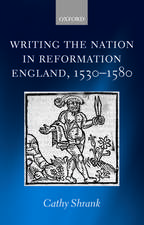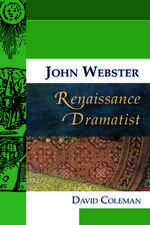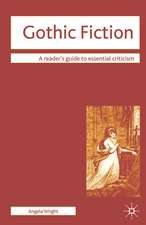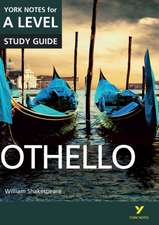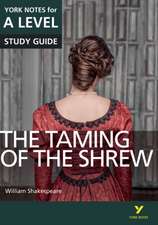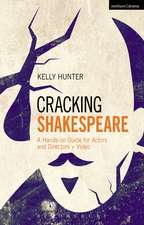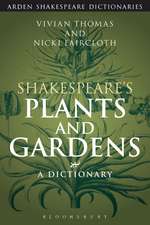The Reception of Laurence Sterne in Europe: The Reception of British and Irish Authors in Europe
Editat de Peter De Voogd, John Neubaueren Limba Engleză Paperback – 21 dec 2008
| Toate formatele și edițiile | Preț | Express |
|---|---|---|
| Paperback (1) | 189.28 lei 6-8 săpt. | |
| Bloomsbury Publishing – 21 dec 2008 | 189.28 lei 6-8 săpt. | |
| Hardback (1) | 1195.87 lei 6-8 săpt. | |
| Bloomsbury Publishing – 30 apr 2004 | 1195.87 lei 6-8 săpt. |
Din seria The Reception of British and Irish Authors in Europe
- 44%
 Preț: 2166.85 lei
Preț: 2166.85 lei - 36%
 Preț: 192.42 lei
Preț: 192.42 lei -
 Preț: 192.15 lei
Preț: 192.15 lei -
 Preț: 188.34 lei
Preț: 188.34 lei - 34%
 Preț: 229.75 lei
Preț: 229.75 lei -
 Preț: 193.96 lei
Preț: 193.96 lei -
 Preț: 398.19 lei
Preț: 398.19 lei -
 Preț: 192.99 lei
Preț: 192.99 lei -
 Preț: 190.44 lei
Preț: 190.44 lei - 34%
 Preț: 230.90 lei
Preț: 230.90 lei -
 Preț: 586.90 lei
Preț: 586.90 lei -
 Preț: 190.81 lei
Preț: 190.81 lei - 36%
 Preț: 192.15 lei
Preț: 192.15 lei - 36%
 Preț: 192.42 lei
Preț: 192.42 lei - 44%
 Preț: 1667.84 lei
Preț: 1667.84 lei - 44%
 Preț: 1317.79 lei
Preț: 1317.79 lei - 44%
 Preț: 1317.79 lei
Preț: 1317.79 lei - 44%
 Preț: 1433.99 lei
Preț: 1433.99 lei - 35%
 Preț: 193.18 lei
Preț: 193.18 lei -
 Preț: 192.15 lei
Preț: 192.15 lei -
 Preț: 229.37 lei
Preț: 229.37 lei - 17%
 Preț: 329.44 lei
Preț: 329.44 lei -
 Preț: 1893.83 lei
Preț: 1893.83 lei -
 Preț: 1667.84 lei
Preț: 1667.84 lei - 14%
 Preț: 1471.24 lei
Preț: 1471.24 lei - 36%
 Preț: 1783.83 lei
Preț: 1783.83 lei
Preț: 189.28 lei
Nou
Puncte Express: 284
Preț estimativ în valută:
36.22€ • 37.91$ • 30.15£
36.22€ • 37.91$ • 30.15£
Carte tipărită la comandă
Livrare economică 31 martie-14 aprilie
Preluare comenzi: 021 569.72.76
Specificații
ISBN-13: 9781847145994
ISBN-10: 184714599X
Pagini: 360
Dimensiuni: 156 x 234 x 19 mm
Greutate: 0.5 kg
Editura: Bloomsbury Publishing
Colecția Continuum
Seria The Reception of British and Irish Authors in Europe
Locul publicării:London, United Kingdom
ISBN-10: 184714599X
Pagini: 360
Dimensiuni: 156 x 234 x 19 mm
Greutate: 0.5 kg
Editura: Bloomsbury Publishing
Colecția Continuum
Seria The Reception of British and Irish Authors in Europe
Locul publicării:London, United Kingdom
Caracteristici
Now available in paperback for the first time, enabling individual purchase by academics and postgraduates.
Cuprins
Series Editor's Preface
Acknowledgements
List of Contributors
Abbreviations
Timeline: European Reception of Laurence Sterne
1. Movements of Sensibility and Sentiment: Sterne in Eighteenth-Century France, Lana Asfour
2. Romantic to Avant-Garde: Sterne in Nineteenth- and Twentieth-Century France, Anne Bandry (University of Mulhouse)
3. 'Sterne-Bilder': Sterne in the German-Speaking World, Duncan Large (University of Wales, Swansea)
4. Sterne in the Netherlands, Peter de Voogd (University of Utrecht)
5. Sterne's Nordic Presence: Denmark, Norway, Sweden, Paul Goring with Eli Løfaldli (University of Trondheim)
6. From Imperial Court to Peasant's Cot: Sterne in Russia, Neil Stewart (University of Giessen)
7. Sterne in Poland, Grazyna Bystydzienzska (University of Warsaw) and Wojciech Nowicki (Marie Curie University of Lublin)
8. Conceiving Selves and Others: Sterne and Croatian Culture,Tatjana Jukic (University of Zagreb)
9. Sterne in Hungary, Gabriella Hartvig (University of Pécs)
10. The Sentimental, the 'Inconclusive', the Digressive: Sterne in Italy, Olivia Santovetti (University of Cambridge)
11. Sterne's Arrival in Portugal, Manuel Portela (University of Coimbra)
12. Sterne Castles in Spain, Luis Pegenaute (Pompeu Fabra University)
13. Sternean Material Culture: Lorenzo's Snuff-box and his Graves, W.G.Day (Winchester College)
14. Shandean Theories of the Novel: From Friedrich Schlegel's German Romanticism to Shklovsky's Russian Formalism, John Neubauer (University of Amsterdam) and Neil Stewart (University of Giessen)
Bibliography
Index
Acknowledgements
List of Contributors
Abbreviations
Timeline: European Reception of Laurence Sterne
1. Movements of Sensibility and Sentiment: Sterne in Eighteenth-Century France, Lana Asfour
2. Romantic to Avant-Garde: Sterne in Nineteenth- and Twentieth-Century France, Anne Bandry (University of Mulhouse)
3. 'Sterne-Bilder': Sterne in the German-Speaking World, Duncan Large (University of Wales, Swansea)
4. Sterne in the Netherlands, Peter de Voogd (University of Utrecht)
5. Sterne's Nordic Presence: Denmark, Norway, Sweden, Paul Goring with Eli Løfaldli (University of Trondheim)
6. From Imperial Court to Peasant's Cot: Sterne in Russia, Neil Stewart (University of Giessen)
7. Sterne in Poland, Grazyna Bystydzienzska (University of Warsaw) and Wojciech Nowicki (Marie Curie University of Lublin)
8. Conceiving Selves and Others: Sterne and Croatian Culture,Tatjana Jukic (University of Zagreb)
9. Sterne in Hungary, Gabriella Hartvig (University of Pécs)
10. The Sentimental, the 'Inconclusive', the Digressive: Sterne in Italy, Olivia Santovetti (University of Cambridge)
11. Sterne's Arrival in Portugal, Manuel Portela (University of Coimbra)
12. Sterne Castles in Spain, Luis Pegenaute (Pompeu Fabra University)
13. Sternean Material Culture: Lorenzo's Snuff-box and his Graves, W.G.Day (Winchester College)
14. Shandean Theories of the Novel: From Friedrich Schlegel's German Romanticism to Shklovsky's Russian Formalism, John Neubauer (University of Amsterdam) and Neil Stewart (University of Giessen)
Bibliography
Index
Recenzii
"It is a tribute to the fascinating material to be found throughout this volume that one often wishes the book were longer...As should be clear, his volume is a gold-mine of information and a treasury of affectionate readings and creative misreadings of Laurence Sterne, often made in difficult political or personal circumstances, as well as a work of enormous value to a range of readers -- not only Sterneans or those interested in the reception of British authors in Europe but also, for example, those concerned with translation per se." Ian Campbell Ross, The Shandean, Autumn 2005
"This collection of fourteen essays is part of the [series] "The Reception of British Authors in Europe."... the series is a good one, and if the other volumes are as well-conceived and interesting as this one on Sterne, they will offer a major contribution to literary study in the twenty-first century...The collection is organized geographically: two essays on the French reception, one each on Germany, the Netherlands, the Nordic countries (Denmark, Norway, Sweden), Russia, Poland, Croatia, Hungary, Italy, Portugal, and Spain. A bonus chapter by W. G. Day discusses some of the material manifestations (painting, artifacts, graveyards) that accompanied the Sterne phenomenon in the first part of the nineteenth century...The virtues of the collection are, first, its attention to bibliographical detail concerning translations and imitations of Sterne; and, second, its abundant quotation of unfamiliar passages of analysis and evaluation, each of which is translated for the benefit of scholars whose Polish or Danish may not be quite up to their French and German. Each essay is allowed to tell its own unique story, and while these are sine experiences of Sterne shared across national boundaries- most interesting, Sterne's appearance again and again in liberation movements- the ultimate sense we are left with is that each country and each generation makes of Sterne what its morals and its great authors dictate." The Scriblerian, Spring 2006, Vol. XXXVIII No. 2
Briefly reviewed in the Year's work in English Studies journal, vol 89, No. 1 'A record of painstaking research on the periodical press and the reviews that assessed Sterne's work on its initial publication in France'
The Reception of Laurence Sterne in Europe engages with Sterne's two bestselling novels in detail, while giving a sense of the scale and diversity of his reception. After the author's death in 1768, Sterne's friends and followers capitalized on his fame by collecting his letters and fabricating replies, by 'finding' autobiographies and sequels, or by writing parodies and eulogies for his characters. As a result Sterne's canon underwent an enormous posthumous expansion, in Britain and on the continent. Elinor Shaffer, the series editor of The Reception of British and Irish Authors in Europe, points out that Sterne's reception makes particular claims on scholars, given that his works called forth 'new terminology, innovative progeny and concomitant critical theory' (p.vii)...This volume sheds light on possible new areas of study with every reading. Emily Finer, Journal of European Studies, vol. 37, 2007
"This collection of fourteen essays is part of the [series] "The Reception of British Authors in Europe."... the series is a good one, and if the other volumes are as well-conceived and interesting as this one on Sterne, they will offer a major contribution to literary study in the twenty-first century...The collection is organized geographically: two essays on the French reception, one each on Germany, the Netherlands, the Nordic countries (Denmark, Norway, Sweden), Russia, Poland, Croatia, Hungary, Italy, Portugal, and Spain. A bonus chapter by W. G. Day discusses some of the material manifestations (painting, artifacts, graveyards) that accompanied the Sterne phenomenon in the first part of the nineteenth century...The virtues of the collection are, first, its attention to bibliographical detail concerning translations and imitations of Sterne; and, second, its abundant quotation of unfamiliar passages of analysis and evaluation, each of which is translated for the benefit of scholars whose Polish or Danish may not be quite up to their French and German. Each essay is allowed to tell its own unique story, and while these are sine experiences of Sterne shared across national boundaries- most interesting, Sterne's appearance again and again in liberation movements- the ultimate sense we are left with is that each country and each generation makes of Sterne what its morals and its great authors dictate." The Scriblerian, Spring 2006, Vol. XXXVIII No. 2
Briefly reviewed in the Year's work in English Studies journal, vol 89, No. 1 'A record of painstaking research on the periodical press and the reviews that assessed Sterne's work on its initial publication in France'
The Reception of Laurence Sterne in Europe engages with Sterne's two bestselling novels in detail, while giving a sense of the scale and diversity of his reception. After the author's death in 1768, Sterne's friends and followers capitalized on his fame by collecting his letters and fabricating replies, by 'finding' autobiographies and sequels, or by writing parodies and eulogies for his characters. As a result Sterne's canon underwent an enormous posthumous expansion, in Britain and on the continent. Elinor Shaffer, the series editor of The Reception of British and Irish Authors in Europe, points out that Sterne's reception makes particular claims on scholars, given that his works called forth 'new terminology, innovative progeny and concomitant critical theory' (p.vii)...This volume sheds light on possible new areas of study with every reading. Emily Finer, Journal of European Studies, vol. 37, 2007


